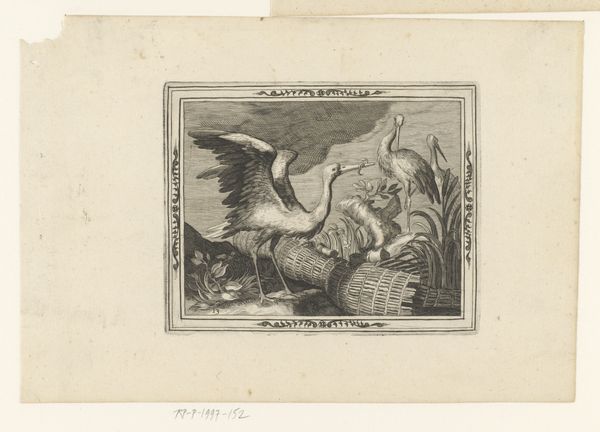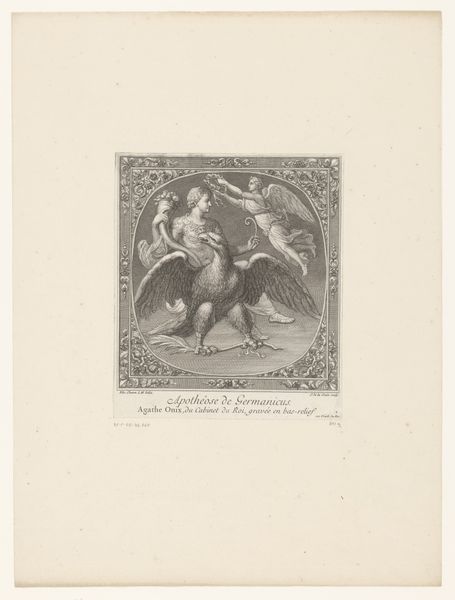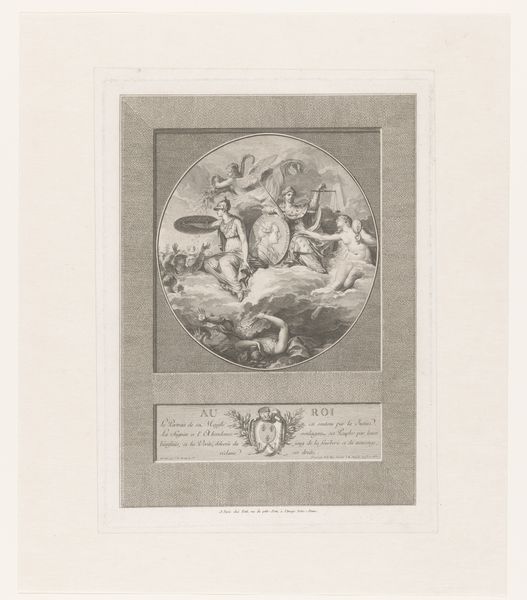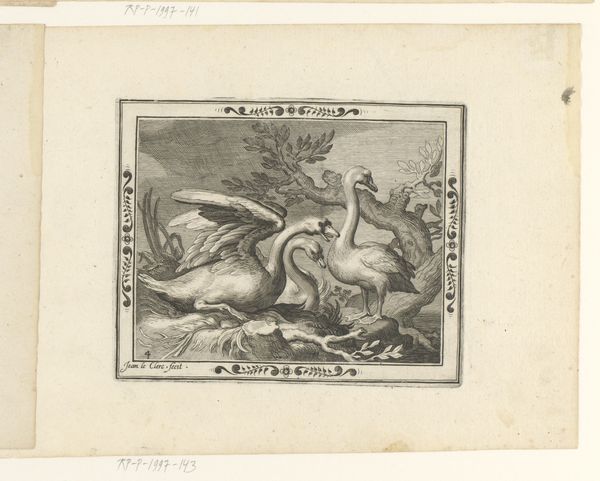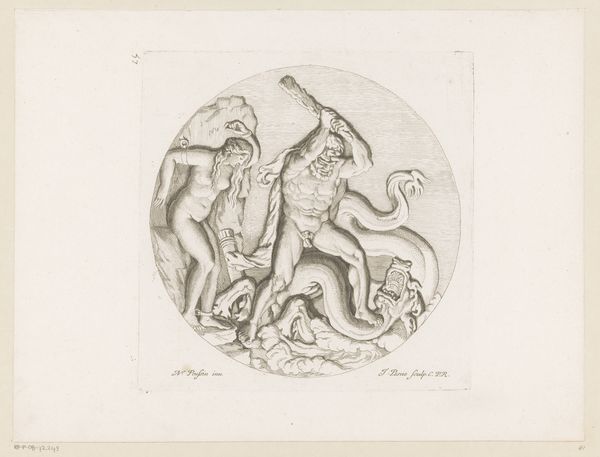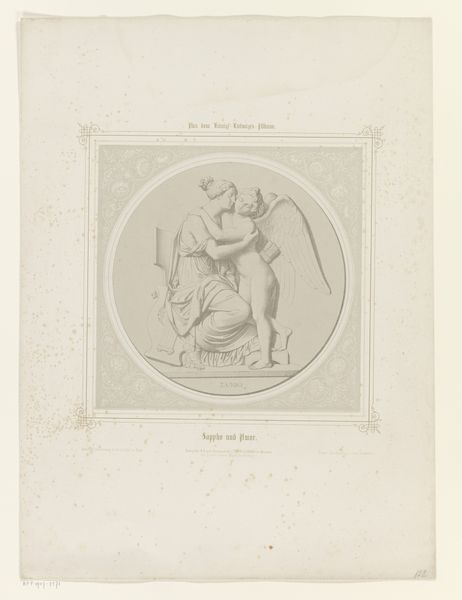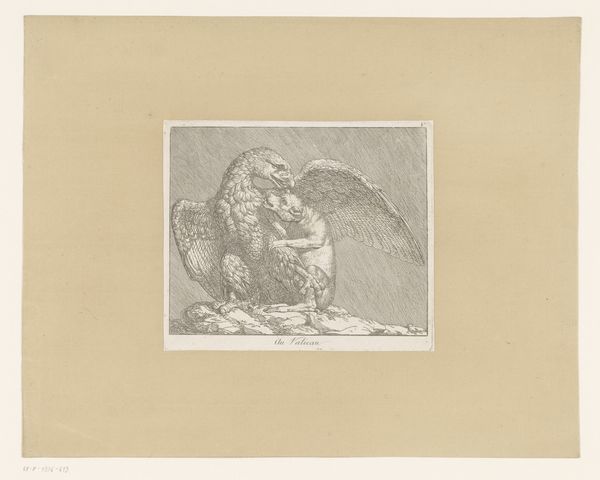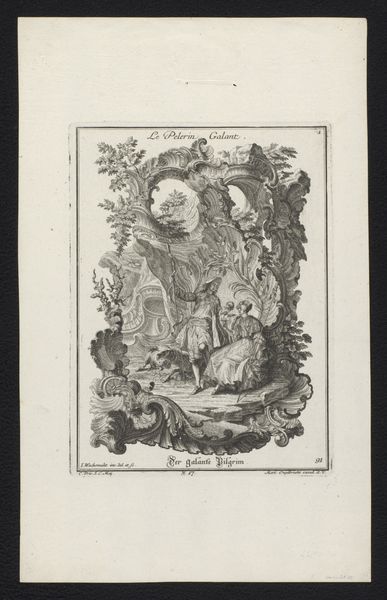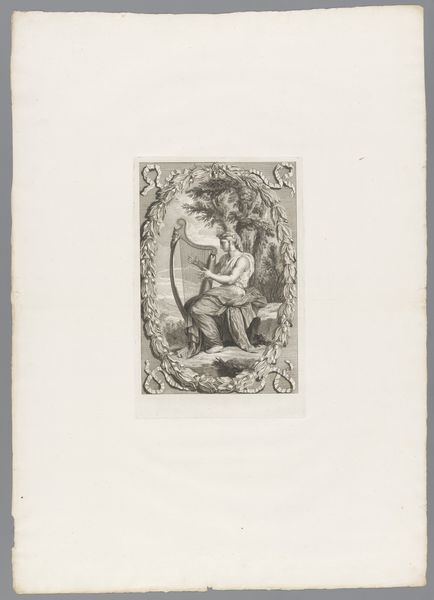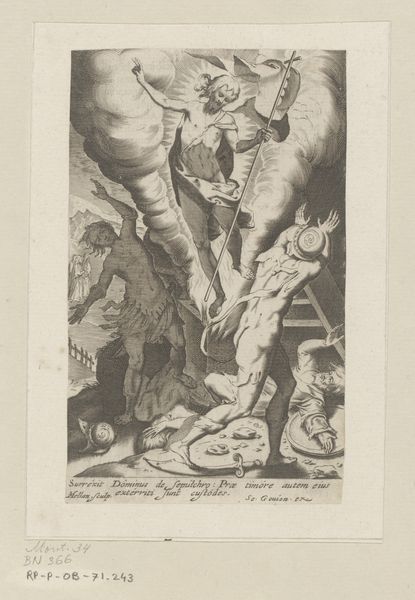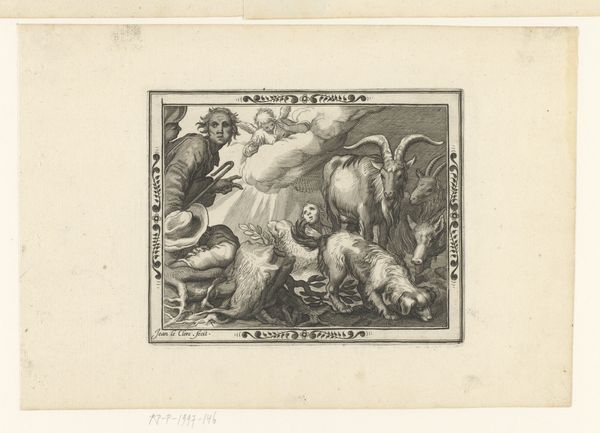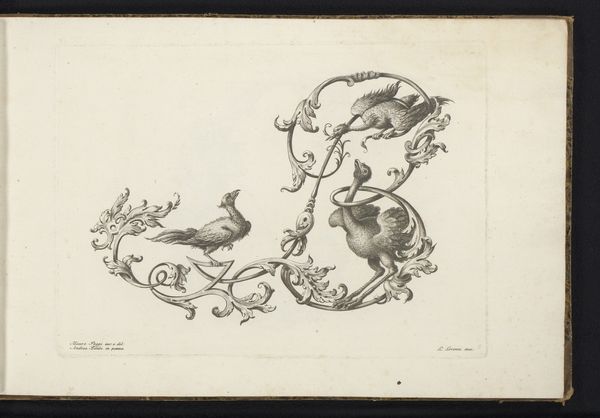
drawing, print, relief, paper, woodcut, engraving
#
drawing
#
neoclacissism
#
allegory
# print
#
relief
#
classical-realism
#
paper
#
form
#
woodcut
#
line
#
engraving
Dimensions: 170 mm (height) x 133 mm (width) (bladmaal)
Curator: Before us is "Natten," created by Johan Frederik Rosenstrand, dating somewhere between 1820 and 1887. It's currently held here at the SMK, Statens Museum for Kunst. Editor: It feels… fragile. All those delicate lines on paper, depicting what looks like an angel cradling a child. Sort of a dreamlike solemnity. Curator: The artwork aligns with neoclassical ideals prevalent at the time, evident in its clean lines and allegorical subject matter. Consider how the image engages classical form in its depiction of night as a maternal figure. We might explore the construction of gender roles through this lens and consider if "Natten" reaffirms or subtly challenges societal expectations. Editor: That’s quite a theoretical heavy lift for what feels so…personal. Look at the detail in the wings, or how gently she holds the child. It reminds me of lullabies, that quiet, protective feeling when the world is hushed. It’s less about political statement and more about… tenderness. Maybe even my own ambivalence surrounding motherhood in light of social expectation. Curator: But isn’t that “tenderness” culturally produced? The very notion of a protective, maternal figure aligns neatly with patriarchal structures and assumptions about the innate qualities of women. To understand "Natten", we must engage with its historical context: an era grappling with evolving ideas about gender and power. We must also think of the artistic traditions around the notion of allegory. Editor: Oh, I agree it's impossible to ignore the broader cultural context. But the raw emotion it stirs, for me anyway, eclipses the theory a little. I feel transported by its melancholy. Isn’t that emotionality an important piece of the puzzle, one of the most important ones? I bet this image looks amazing in light-box format. Curator: That personal connection is important. However, by looking at it through varied interpretive lenses, we acknowledge how these visual allegories shape, and are shaped by, the societies that produce and consume them. Editor: Hmm. Fair point. I guess "Natten" is whispering more secrets than I initially thought. It’s amazing to realize how the art object can speak to someone over centuries, but in so many different ways, right?
Comments
No comments
Be the first to comment and join the conversation on the ultimate creative platform.
